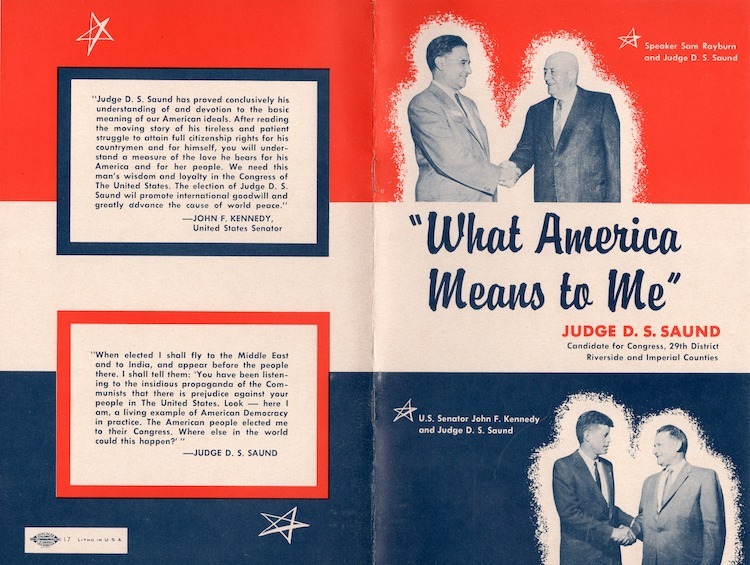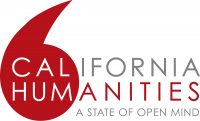Summer Of Research
May, June, and July 2022
Empowered by my ITVS Humanities Documentary Development Fellowship and by a $10,000 research and development grant from California Humanities, I entered what serious researchers call the “vacuum cleaner” stage of research. That means, I started collecting anything and everything I could about the 1956 contest between Dalip Singh Saund and Jackie Cochran Odlum.
I hired researcher Saskia Ghosh, and together we recruited a team that included 4 summer interns from Berkeley, Barnard, and the University of Southern California.
My research took me to Santa Barbara, CA to review Dalip Singh Saund’s personal archive of papers at the UC Santa Barbara Library. I then went to Abilene, Kansas to review Jackie Cochran Odlum’s papers, gifted to the American public and placed at the Eisenhower Presidential Library. I also made a brief one-day visit to the Truman Presidential Library in Independence, Missouri for reasons I will reveal in a future post.
The personal archive of Dalip Singh Saund is a small but rich collection of 14 boxes of material. Saund grew up in a village near Amritsar, Chhajulwadi, India, and was a teenager during WWI. At that time, Indians were subjects of British colonial rule. Saund became interested in America after reading transcripts of President Woodrow Wilson’s speeches about democracy, which at the time were widely printed in Indian newspapers. He decided to come to America as a student and to see for himself democracy in action. He came to the US in the fall of 1920 to study at the College of Agriculture at Berkeley. He planned to study food preservation with the idea that he would return to India as a food science specialist. Over the years that followed, he switched gears to obtain a Ph.D. in Mathematics and decided to make the United States his new home.
The collection has a lot of material about Saund’s election campaign and his time in the U.S. Congress. When he ran for Congress, one of his biggest challenges was that his district (District 29) was comprised of two separate counties – Imperial and Riverside counties – and no one in Riverside knew who he was. So … he and his family went canvassing door to door to meet his constituents. Here are the front and back of a political pamphlet that Saund and his family used to introduce himself to voters in his district.

One particularly exciting discovery was a photo of Amy Croft. Amy Croft was a woman in his district who worked tirelessly to help Saund get elected. I’d read a story about how she turned her house trailer into a Saund Campaign HQ and traveled to different parts of the district every few days to hand out fliers about him.
Jackie Cochran Oldum’s collection comprises over 462 boxes and 33 oversized scrapbooks. It took me a month just to select the right items from the list and to get organized for the visit. Of course, I focused my attention on her political campaign, but it was also important to me to understand the immensity of her life and to contemplate why she is not better known to us today.
She learned to fly planes in the 1930s and became a part of an elite group of men and women, like Amelia Earhart, who knew Presidents and celebrities because of their aviation talents. During WWII, she convinced President Roosevelt and the US Air Force to bring women into the war effort, and she led the training of almost 1,200 women pilots to serve in in noncombat flying roles in the war. These women piloted planes between factories in the US and the front lines in Europe and Asia. Although this was meant to be a “safe” task, many of them came under enemy fire. She was also a successful businesswoman and married the 4th richest man in the country, Floyd B. Odlum. Her collection is truly a vast national treasure and goldmine for aviation historians, consisting of personal papers, newspapers, photographs, audio recordings, and films.

Regarding her political ambitions, I could see that she threw her heart and soul into her 1956 campaign for Congress. She seemed to be a dedicated public servant who committed all her time and resources to studying the issues that affected her district.
She was very well connected from her wartime service and her support of Eisenhower’s run for President in 1952. She even earned the endorsement of President Eisenhower for her own congressional campaign in 1956.
There is so much more to share with you, and we’re still in the early days of gathering data.
For our documentary film Saund vs Cochran, I want the voices of the voters, the journalists, and the political pundits of the day to appear throughout the film to drive the story forward. Their views will expose a local and national conversation about political representation that has strong parallels to what women and people of color face today.
But I’ll leave you with this fun fact. Both Saund and Cochran faced serious challenges to even get on the ballot! Saund’s Democratic primary opponent ran a smear campaign against him and attempted to remove his name from the ballot after his primary victory, despite being a member of his own political party! As a female candidate, Cochran similarly faced the ire and condemnation of five conservative male candidates in the Republican Party.

I look forward to sharing what we find in future research updates here on this site.
Many thanks have to be expressed to Angel Diaz, Curator, California Ethnic & Multicultural Archives at UC Santa Barbara Library, Mary Burtzloff, Audiovisual Archivist at the Dwight D. Eisenhower Presidential Library, and Laurie Austin, Audiovisual archivist at theHarry S. Truman Library.





